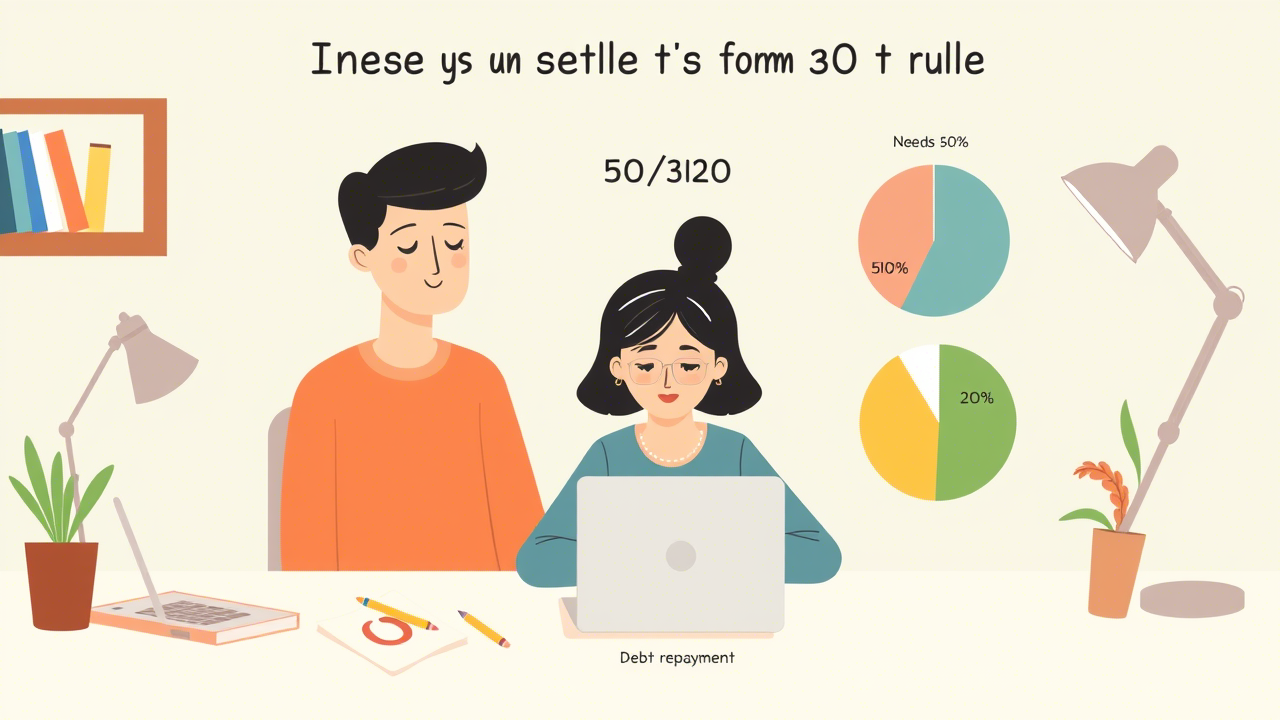The 50/30/20 Rule: A Simple Way to Manage Your Money

The 50/30/20 Rule: A Simple Way to Manage Your Money
Managing money can often feel overwhelming, especially when trying to balance bills, savings, and lifestyle choices. It’s easy to get caught up in the complexities of budgeting, but one simple yet effective method to keep your finances in check is the 50/30/20 rule. This straightforward approach is designed to help you allocate your income in a way that ensures financial stability while allowing for flexibility and enjoyment.

What is the 50/30/20 Rule?
At its core, the 50/30/20 rule divides your after-tax income into three main categories:
-
50% for Needs
-
30% for Wants
-
20% for Savings or Debt Repayment
This balanced structure provides a clear framework for budgeting, making it easier to track and manage your expenses without feeling restricted.
Breaking It Down
-
50% for Needs
The first portion of the rule—50% of your income—should be dedicated to needs. These are essential expenses that you cannot live without. Common examples include:-
Rent or mortgage payments
-
Utilities (electricity, water, internet)
-
Groceries
-
Health insurance
-
Transportation (car payments, gas, public transport)
The key to this category is that it includes anything that is required for your basic survival and functioning. Needs are your non-negotiables, so it’s important to ensure these are covered before allocating money elsewhere.
-
-
30% for Wants
The second portion—30%—is for wants. This category is where you can spend money on things that improve your lifestyle but aren’t strictly necessary. Think of things that bring joy or enhance your quality of life, such as:-
Dining out or ordering takeout
-
Entertainment (movies, streaming services, concerts)
-
Travel and vacations
-
Shopping for clothes or accessories
-
Hobbies and leisure activities
While these things aren’t essential, they are important for maintaining a balanced and enjoyable life. The 30% allocation ensures you can treat yourself without overindulging.
-
-
20% for Savings or Debt Repayment
The final portion of the rule—20%—should be directed towards savings or debt repayment. Building an emergency fund, contributing to retirement accounts, and paying off outstanding debts are all crucial for financial health. If you don’t have debt, you can focus entirely on saving for future goals, such as buying a house, building an investment portfolio, or creating a financial cushion for unexpected expenses.This 20% allocation sets a solid foundation for your financial future, giving you a sense of security and peace of mind.
Why the 50/30/20 Rule Works
One of the reasons this rule is so popular is its simplicity. It doesn’t require complex calculations or spreadsheets to follow, making it an easy method for anyone to implement—whether you’re just starting out or looking to refine your financial habits. The 50/30/20 rule also promotes a healthy balance between taking care of essential expenses, enjoying life, and securing your financial future.
By sticking to this method, you can avoid the stress of living paycheck to paycheck, while also ensuring that you’re building a stable financial future for yourself. It encourages mindful spending, allowing you to prioritize what matters most to you without feeling guilty about the occasional splurge.
Adjusting the Rule to Fit Your Life
While the 50/30/20 rule provides a helpful guideline, it’s important to remember that it’s not one-size-fits-all. Life circumstances and priorities vary from person to person, so you may need to adjust the percentages based on your individual situation.
For example, if you live in a high-cost-of-living area, your “needs” category might need to take up more than 50% of your income. Alternatively, if you’re focusing on paying off debt aggressively, you might want to allocate more than 20% toward that goal.
The key is to remain flexible and adjust the percentages as needed, ensuring that you are still following a structure that helps you meet your financial goals while living within your means.
Final Thoughts
The 50/30/20 rule offers a straightforward, sustainable way to manage your finances with ease and peace of mind. By dividing your income into three clear categories, you’re creating a roadmap that helps you prioritize your needs, indulge in your wants, and save for the future. It’s a balanced approach that allows you to live in the present while preparing for what’s ahead, making it an effective tool for anyone looking to take control of their financial journey.